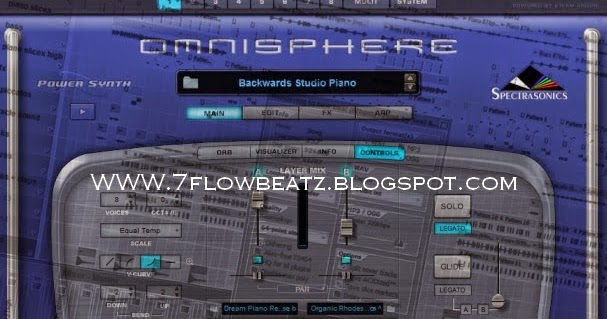Where To Store Vst Plugins For Reaper
Step 1.1 Download the Virtual Instrument (VSTi)
Best Free VST Plugins 1. Native Instruments. Native Instruments has done a remarkable job by releasing KOMPLETE START. It’s a complete audio-mixing bundle that contains a variety of VST plugins, virtual instruments, thousands of audio effects, and several other free resources for music production. Earlier all these elements were available. TAL-NoiseMaker has been an improved and updated version of the TAL-Elek7ro.
From this page download the BassMidi VSTi 1.2 zipfile.
Step 1.2 Unzip that file to your VST plugin directory
Two Common directories for VST plugins:
- C:Program Files (x86)SteinbergVstPlugins
- C:Program Files (x86)Common FilesVST3
If either of these folders exist or if you have admin privileges on your computer you can unzip the contents of the zipfile to one of the above folders. Since I’m working on a computer with no admin rights I had to make a portable install of Reaper in this folder C:REAPER so I navigated to C:REAPERUserPlugins and made a folder called VST.
Step 1.3 Make sure Reaper knows where your VST has been unzipped to
- In REAPER, press [Ctrl] + P (Windows) / [Cmd] + [,] (Mac) to access Preferences.
- Go to Plug-ins > VST.
- Under “VST Plugin Path,” make sure that the path where you placed your plugins is listed (if not, add it)… see the screenshot for how I added C:REAPERUserPluginsVST after the other two default folders.
- Click on Re-Scan and your instrument should be available within Reaper.
Step 2.1 Time to download a Soundfont to open within the VSTi we just installed

A free GM/GS soundfont has been shared here Reality_GMGS_falcomod.sf2 (version 1.2)
Thanks to Falcosoft for sharing the soundfont on this page Pitched percussion vst free.
Where To Store Vst Plugins For Reaper Free
Step 2.3 Unzip the Soundfont to a folder / directory where you will store your soundfonts
You might choose to make a folder called “Soundfonts” in a location where you keep your loops and other audio resources… perhaps within the Reaper folder or another area on your computer where you keep things organised.
Step 3.1 Time to try inserting a Virtual Instrument into Reaper using the VSTi and Soundfont we just downloaded.
Note: If Step 1.3 went smoothly and you Re-Scanned the VST folder Reaper should be able to find the new plugin… If not, try re-scanning or perhaps try restarting Reaper. If that fails you will need to check that the directory to where you extracted the VST files is included in the VST plugin folders that Reaper looks in (as per the screenshot in 1.3). If that fails you might need to ask me for some help 🙂
Insert > Virtual instrument on new track
Display the Virtual MIDI piano (Alt+B)
Hopefully you can now hear the sound of a piano when you make use of the virtual MIDI piano

Download some free Soundfonts
Some links that might have some to check out…
- A Blog post listing tonnes of different Soundfonts
- On the Musescore website they have a few more soundfonts available.
Install Sforzando Sound Font player as it works on Mac or Windows
Step 1.1 Download the Virtual Instrument (VSTi)
From this page download the BassMidi VSTi 1.2 zipfile.
Step 1.2 Unzip that file to your VST plugin directory
Two Common directories for VST plugins:
- C:Program Files (x86)SteinbergVstPlugins
- C:Program Files (x86)Common FilesVST3
If either of these folders exist or if you have admin privileges on your computer you can unzip the contents of the zipfile to one of the above folders. Since I’m working on a computer with no admin rights I had to make a portable install of Reaper in this folder C:REAPER so I navigated to C:REAPERUserPlugins and made a folder called VST. /windows-10-vst-plugin-location.html.
Step 1.3 Make sure Reaper knows where your VST has been unzipped to
- In REAPER, press [Ctrl] + P (Windows) / [Cmd] + [,] (Mac) to access Preferences.
- Go to Plug-ins > VST.
- Under “VST Plugin Path,” make sure that the path where you placed your plugins is listed (if not, add it)… see the screenshot for how I added C:REAPERUserPluginsVST after the other two default folders.
- Click on Re-Scan and your instrument should be available within Reaper.
Step 2.1 Time to download a Soundfont to open within the VSTi we just installed
A free GM/GS soundfont has been shared here Reality_GMGS_falcomod.sf2 (version 1.2)
Thanks to Falcosoft for sharing the soundfont on this page
Step 2.3 Unzip the Soundfont to a folder / directory where you will store your soundfonts
Reaper Vst Plugin Folder
You might choose to make a folder called “Soundfonts” in a location where you keep your loops and other audio resources… perhaps within the Reaper folder or another area on your computer where you keep things organised.
Step 3.1 Time to try inserting a Virtual Instrument into Reaper using the VSTi and Soundfont we just downloaded.
Note: If Step 1.3 went smoothly and you Re-Scanned the VST folder Reaper should be able to find the new plugin… If not, try re-scanning or perhaps try restarting Reaper. If that fails you will need to check that the directory to where you extracted the VST files is included in the VST plugin folders that Reaper looks in (as per the screenshot in 1.3). If that fails you might need to ask me for some help 🙂
Insert > Virtual instrument on new track
Display the Virtual MIDI piano (Alt+B)
Hopefully you can now hear the sound of a piano when you make use of the virtual MIDI piano
Download some free Soundfonts
Some links that might have some to check out…
- A Blog post listing tonnes of different Soundfonts
- On the Musescore website they have a few more soundfonts available.
Install Sforzando Sound Font player as it works on Mac or Windows